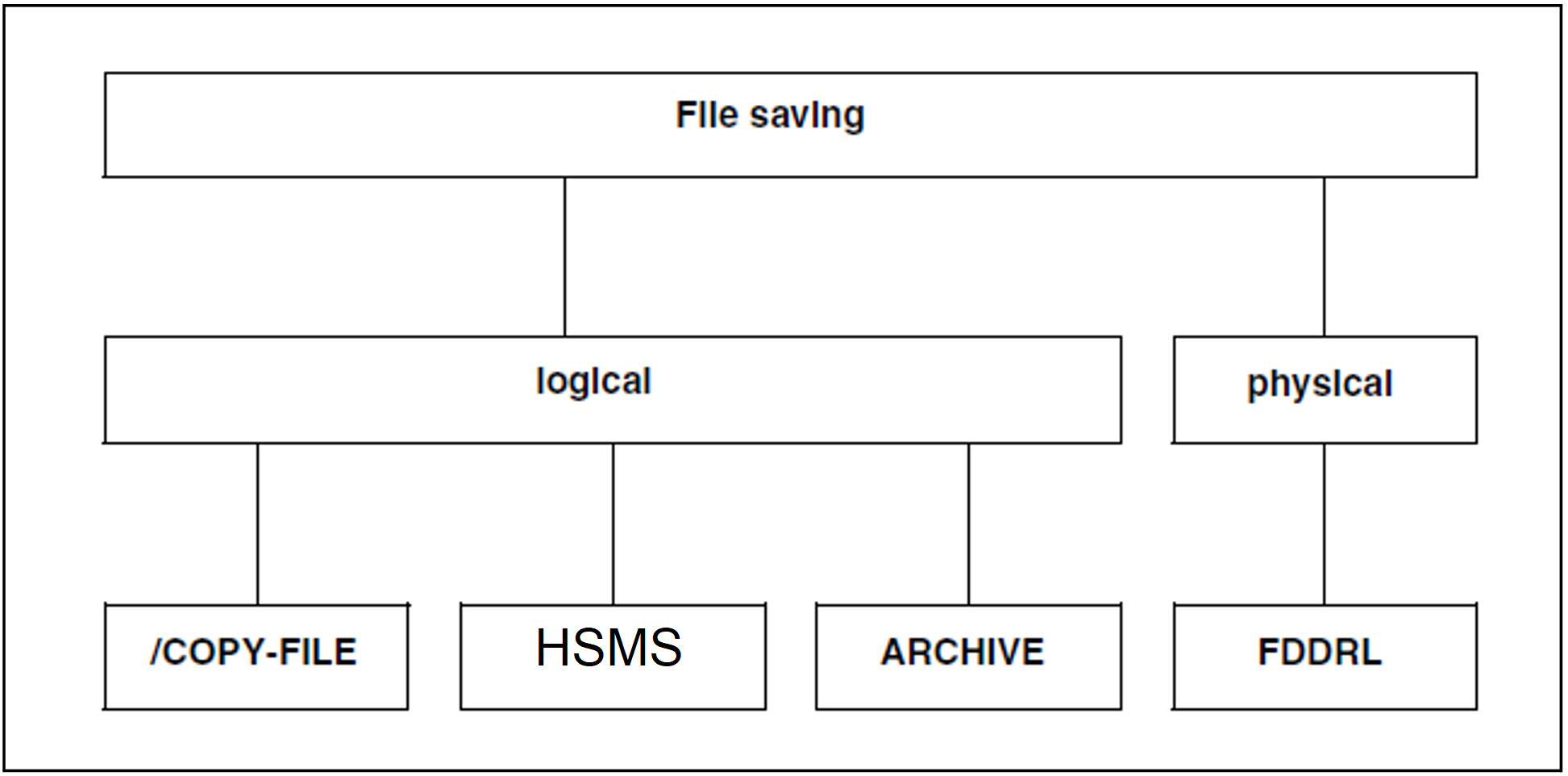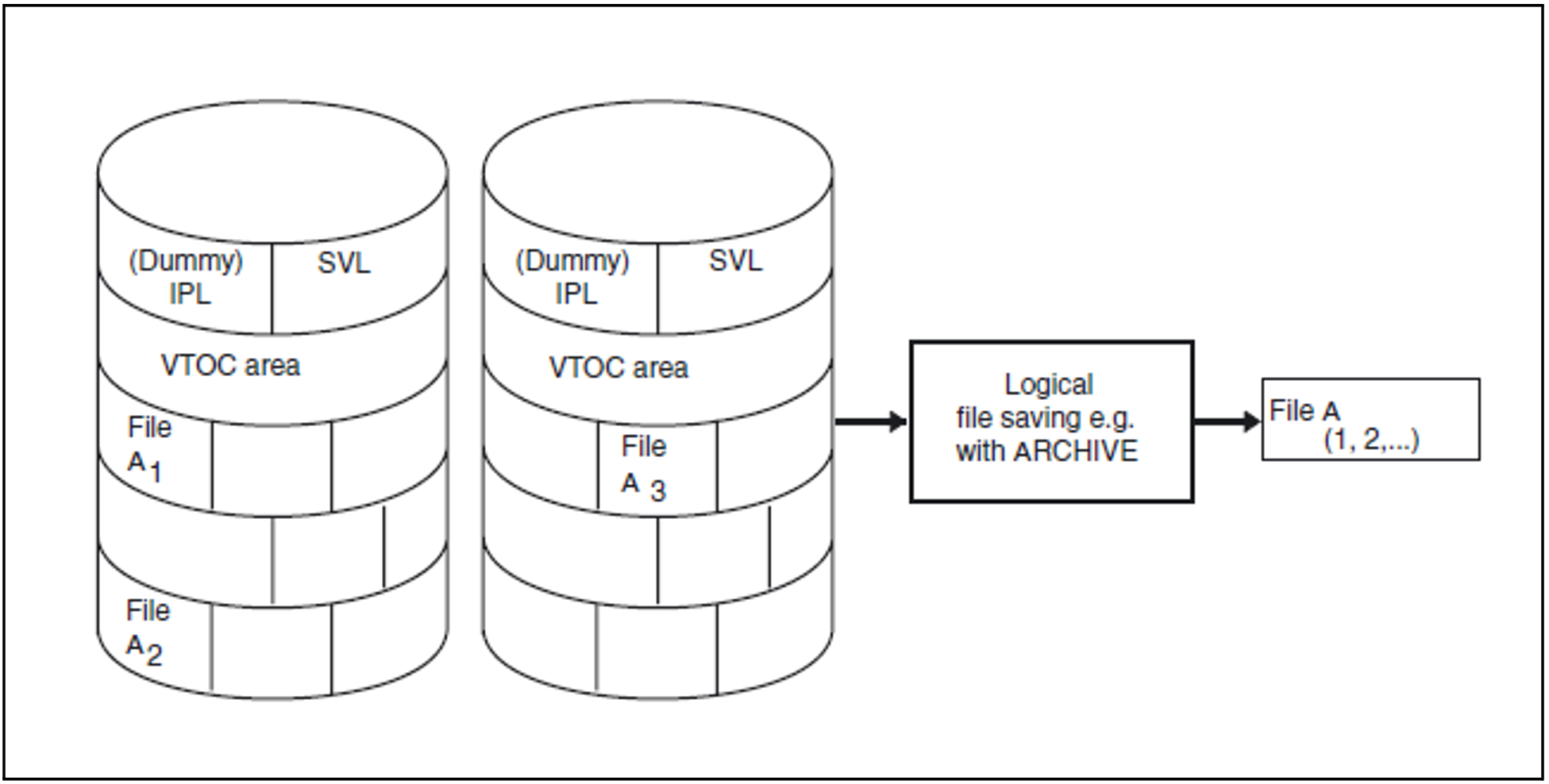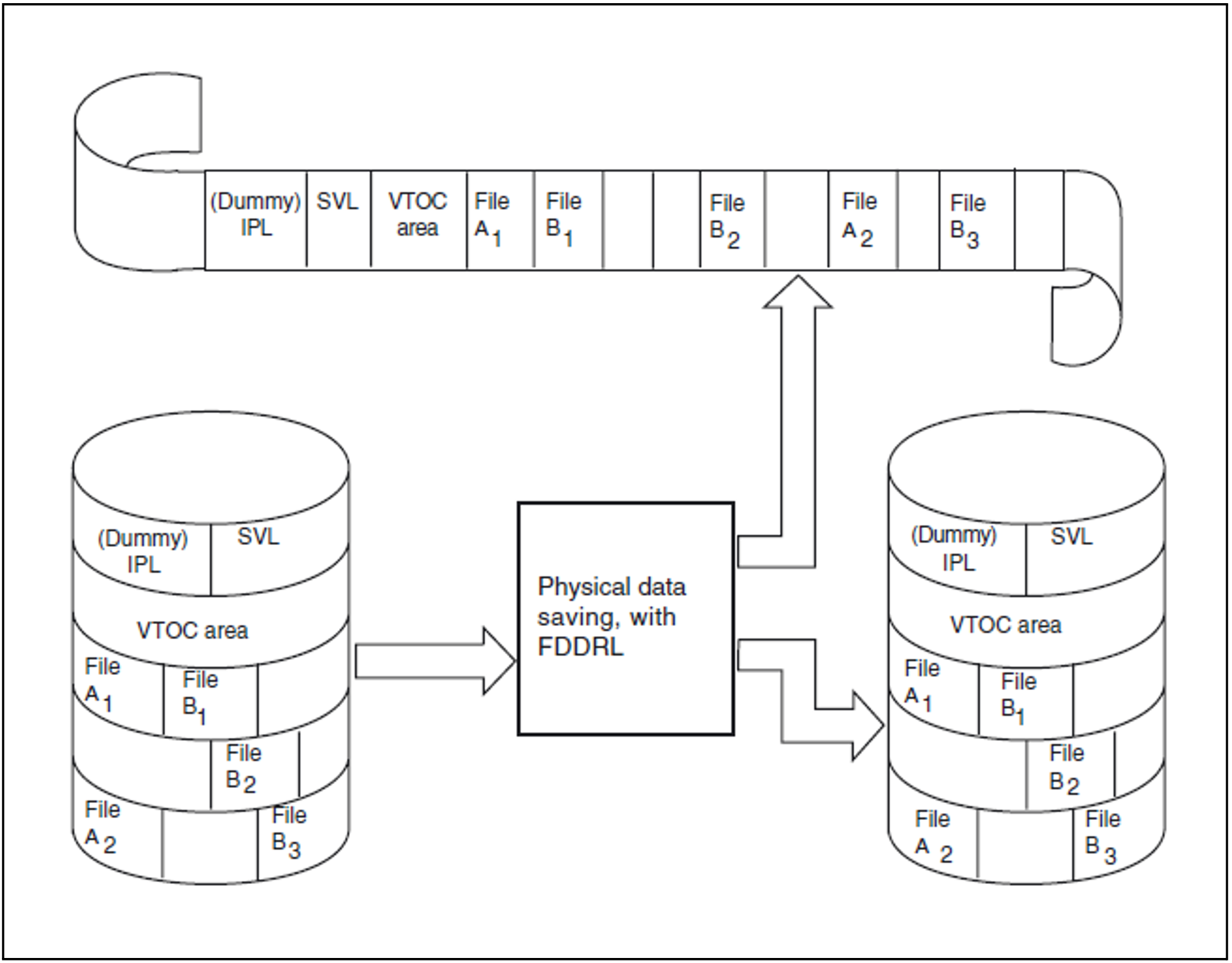Any operating system must ensure that all stored data is always available. Data saving plays a significant role in ensuring the availability of data: if, for example, data is lost due to an operating error at the processing level a copy of this data should be available, and this copy should be as recent as possible.
The operating system BS2000 supports various methods of producing copies of the current data and thus of saving data.
Figure 1: Data saving in BS2000
There are two types of data saving, namely logical and physical data saving.
In logical data saving, files (and job variables) are read from one or more volumes and written as one unit to one or more volumes. Logical data saving thus supports file-specific handling.
In BS2000, logical data saving is supported by the software products ARCHIVE and HSMS (see the “HSMS” manual [9]).
Figure 2: Logical data saving
In physical data saving, entire volumes, rather than individual files, are saved: all the data, including the volume header labels of a volume, is written block by block to a second volume, with the result that it has the same structure and contents as the original one.
In BS2000, physical data saving is supported by the software product FDDRL (see the “FDDRL” manual [8]).
Figure 3: Physical data saving



